#literary poster
Text
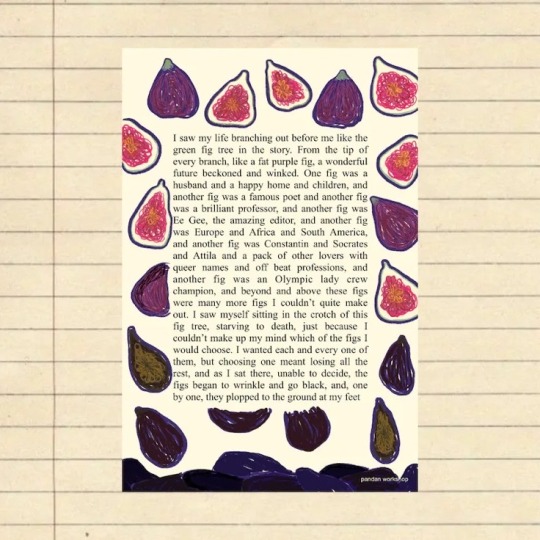
fig tree analogy by sylvia plath, the bell jar
poster here
#poem#art#poetry#poster#vietnamese#vietnamese artist#sea artist#digital art#dorm decor#etsy#mine#literary art#literature#poetry art#poetry poster#literary quotes#literary fiction#literary poster#literature poster#printable poster#girlhood#girlblogging#my year of rest and relaxation#sylvia plath#the bell jar
13 notes
·
View notes
Text
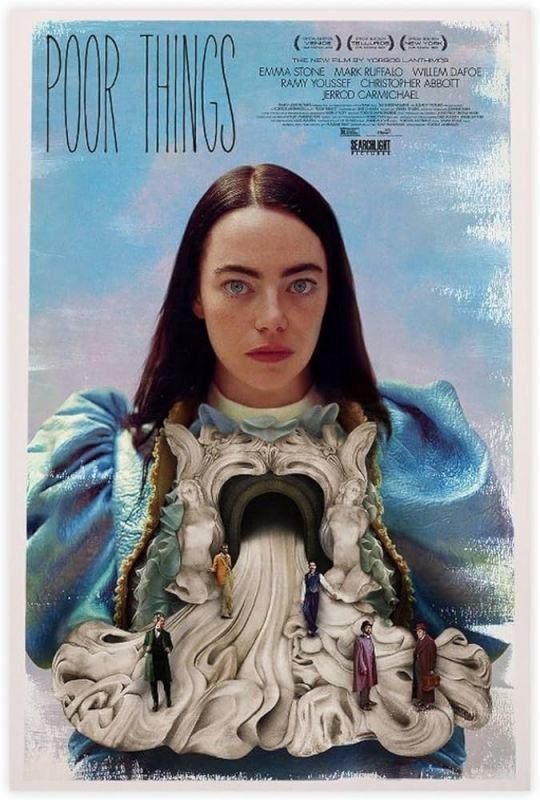

Yorgos Lanthimos, {2023} Poor Things
#film#gif#yorgos lanthimos#poor things#emma stone#ramy youssef#2023#people#animals#black and white#dissolves#seen on the big screen#2020s#feature length#male filmmakers#literary adaptation#ireland#uk#usa#hungary#film poster
67 notes
·
View notes
Text





Masriel + soft smiles
#his dark materials#hdm#asriel x marisa#masriel#asriel belacqua#marisa coulter#HAHA excuse me first one looks like a romantic comedy poster#fourth one too 😭#actually all of them lmao#if james mcavoy looks at you like that it's hard to stay evil#same for ruth tbh#without context these do not look like the most evil parents in literary history#mine#photo edit#screencaps#hdm edit#james mcavoy#ruth wilson#click for bigger 👀
82 notes
·
View notes
Text

#life quotes#literature#quoteoftheday#quotations#quotes#words#english literature#literary quotes#movie review#film#movie gifs#movies#cinema#movie poster#kung fu panda#kung fu cinema#illutration#art#artists on tumblr#artificial intelligence#my art#digital art#illustration#drawing#artwork#photography#cute animals#wonderful#photograph#i sell photos
55 notes
·
View notes
Text
Taking my obsession to an academic level
So a few weeks ago I started working with two profs on a Sherlock Holmes-related project and I made a poster about it.
(I blacked out my info for privacy reasons.)

#bbc sherlock#sherlock#sherlock holmes#tjlc#johnlock#john watson#anne's silly little thoughts#film analysis#academic life#university#poster presentation#academic poster#university life#literary analysis
39 notes
·
View notes
Text

Redesigning book covers: Slaughterhouse 5, Kurt Vonnegut.
13 notes
·
View notes
Photo

#lily james#the guernsey literary and potato peel pie society#matthew goode#movie poster#glen powell#movie posters#film#michael huisman#jessica brown findlay#katherine parkinson#wwii#movies#poster
54 notes
·
View notes
Photo

The Legacies of Ursula K. Le Guin. Science, Fiction and Ethics for the Anthropocen / Héritages d’Ursula Le Guin. Science, fiction et éthique pour l’Anthropocène, International Conference, École Polytechnique / Chaire « arts & sciences », Institut du monde anglophone – Université Paris 3 Sorbonne Nouvelle, Paris, June 18-21, 2019 [Photo: Ursula K. Le Guin in Paris, 1954]. Guest speakers: Julie Phillips, Brian Attebery, Isabelle Stengers
#graphic design#conference#poster#flyer#ursula k. le guin#julie phillips#brian attebery#isabelle stengers#estate of ursula k. le guin#the ursula k. le guin literary trust#2010s
32 notes
·
View notes
Text
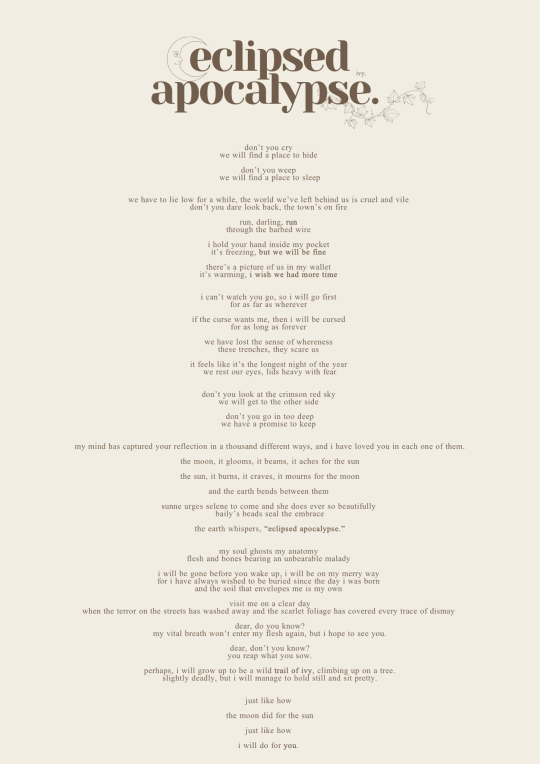
fatima aamer bilal, poster for eclipsed apocalypse.
[text id: don’t you cry / we will find a place to hide / don’t you weep / we will find a place to sleep / we have to lie low for a while, the world we’ve left behind us is cruel and vile / don’t you dare look back, the town’s on fire / run, darling, run / through the barbed wire / i hold your hand inside my pocket / it’s freezing, but we will be fine / there’s a picture of us in my wallet / it’s warming, i wish we had more time / i can’t watch you go, so i will go first / for as far as wherever / if the curse wants me, then i will be cursed / for as long as forever / we have lost the sense of whereness / these trenches, they scare us / it feels like it’s the longest night of the year / we rest our eyes, lids heavy with fear / don’t you look at the crimson red sky / we will get to the other side /don’t you go in too deep / we have a promise to keep / my mind has captured your reflection in a thousand different ways, and i have loved you in each one of them. / the moon, it glooms, it beams, it aches for the sun / the sun, it burns, it craves, it mourns for the moon / and the earth bends between them / sunne urges selene to come and she does ever so beautifully / baily’s beads seal the embrace / the earth whispers, “eclipsed apocalypse.” / my soul ghosts my anatomy / flesh and bones bearing an unbearable malady / i will be gone before you wake up, i will be on my merry way / for i have always wished to be buried since the day i was born / and the soil that envelopes me is my own / visit me on a clear day / when the terror on the streets has washed away and the scarlet foliage has covered every trace of dismay / dear, do you know? / my vital breath won’t enter my flesh again, but i hope to see you. / dear, don’t you know? / you reap what you sow. / perhaps, i will grow up to be a wild trail of ivy, climbing up on a tree. / slightly deadly, but i will manage to hold still and sit pretty. / just like how / the moon did for the sun / just like how / i will do for you.]
#posters#poeticstories#poetry#original poetry#moon#literature#literary#book quotations#quotes#love#prose#poem#excerpts from my journal#taylor swift#lana del rey#lyrics#art#bts#dark academia#aesthetic#sad thoughts#writerscreed#greek myth art#writers and poets#sad prose#apocolypse#eclipse#sylvia plath#franz kafka#astronomy
31 notes
·
View notes
Text
Claude Monet inspo <3
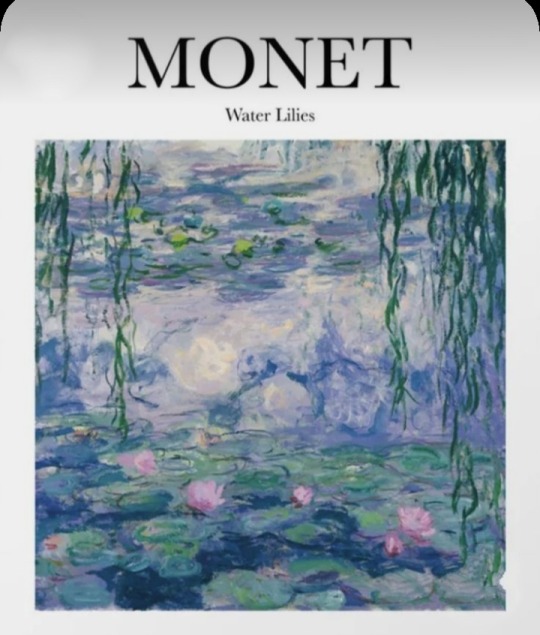
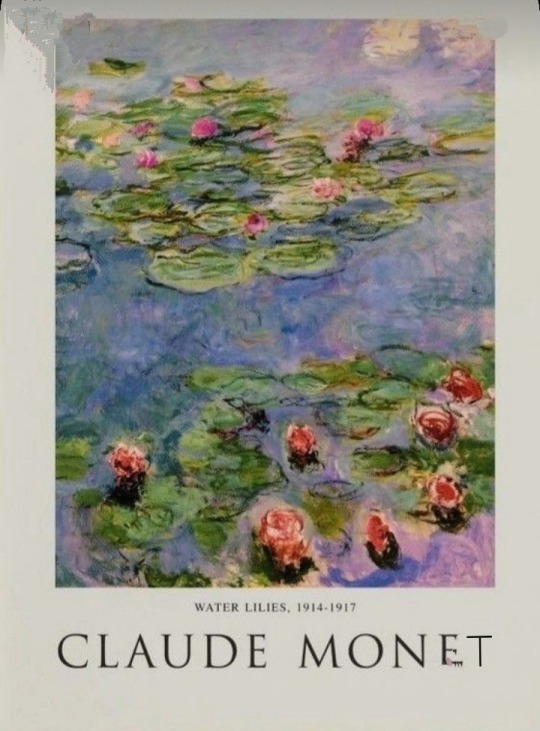




#claude monet#literary#art#pinterest#literature#classic#light academia#nature#tablolar#posters#vintage
4 notes
·
View notes
Note
I mean broadly speaking it seems to be at more expensive schools (not saying that to discredit them). Obvs the private ones like NYU or Emory, but also some state ones like IU or UT Austin. The college I went to is mid cost and just outside a major city with like ~40K students and there’s been nothing going on.
my university has been pretty chill too. but its tuition is definitely on the “I’d be in debt for the rest of my life without the aid and scholarships” side. >10k undergraduates, lot of int’l students among them.
but I do think it matters that it’s advertised to potential students through the framework of “are you a tech nut? do you want to be an engineer or scientist? well, we have incredible equipment here that you will be scared to touch in the case you’ll break it. if you want to go to graduate school for a specific area of physics or chemistry, we have majors where the material you’d be covering otherwise is explored through the lens you’ll be using later. if you perform well enough academically, you may qualify to assist in original research as an undergraduate.”
you sort of end up in an environment where you get a lot of wealthy and incredibly passionate people, but also, nothing ever happens.
#there’s been a months long drama here where like. okay.#there are cork boards all over the place for people to hang things on for whatever reason. promoting something a club is hosting#submission requests for the campus literary magazine. whatever thing the greek life people are doing this week.#casting calls for a boyfriend free girl. provided it’s not obscene you can hang up whatever you want.#but instead of putting these things on the cork boards there are some dipshits who tape their stuff to a wall#and when the custodial staff removes them it rips paint off the wall depending on how old the building is#and we all get a campus-wide email that says ‘whoever is doing this… stop.’#the first time this happened it came with a request to put your name and .edu address on your posters but they gave up on that#I bring it up to say that the climate here is tepid as shit
0 notes
Text

Only the real eyes realize real lies.
#evhinox#poem#literature#writing#poetry#writer#poet#quote#literary#art#aesthetic#lie#lies#liar#poster#scrapbook
0 notes
Text
The truth about Medusa and her rape... Mythology breakdown time!
With the recent release of the Percy Jackson television series, Tumblr is bursting with mythological posts, and the apparition of Medusa the Gorgon has been the object of numerous talks throughout this website… Including more and more spreading of misinformation, and more debates about what is the “true” version of Medusa’s backstory.
Already let us make that clear: the idea that Medusa was actually “blessed” or “gifted” by Athena her petrifying gaze/snake-hair curse is to my knowledge not at all part of the Antique world. I still do not know exactly where this comes from, but I am aware of no Greek or Roman texts that talked about this – so it seems definitively a modern invention. After all, the figure of Medusa and her entire myth has been taken part, reinterpreted and modified by numerous modern women, feminist activist, feminist movements or artists engaged in the topic of women’s life and social conditions – most notably Medusa becoming the “symbol of raped women’ wrath and fury”. It is an interesting reading and a fascinating update of the ancient texts, and it is a worthy take on its own time and context – but today we are not talking about the posterity, reinvention and continuity of Medusa as a myth and a symbol. I want to clarify some points about the ACTUAL myth or legend of Medusa – the original tale, as told by the Greeks and then by the Romans.
Most specifically the question: Was Medusa raped?
Step 1: Yes, but no.
The backstory of Medusa you will find very often today, ranging from mythology manuals (vulgarization manuals of course) to Youtube videos, goes as such: Medusa was a priestess of Athena who got raped by Poseidon while in Athena’s temple, and as a result of this, Athena punished Medusa by turning her into the monstrous Gorgon.
Some will go even further claiming Athena’s “curse” wasn’t a punishment but a “gift” or blessing – and again, I don’t know where this comes from and nobody seems to be able to give me any reliable source for that, so… Let’s put this out of there.
Now this backstory – famous and popular enough to get into Riodan’s book series for example – is partially true. There are some elements here very wrong – and by wrong I do mean wrong.
The story of Medusa being raped and turned into a monster due to being raped does indeed exist, and it is the most famous and widespread of all the Medusa stories, the one people remembered for the longest time and wrote and illustrated the most about. Hence why Medusa became in the 20th century this very important cultural symbol tied to rape and the abuse of women and victim-blaming. HOWEVER – the origin of this story is Ovid’s Metamorphoses, from the first century CE or so. Ovid? A Roman poet writing for Roman people. “Metamorphoses”? One of the two fundamental works of Roman literature and one of the two main texts of Roman mythology, alongside Virgil’s Aeneid. This is a purely Roman story belonging to the Roman culture – and not the Greek one. The story of Medusa’s rape does not have Greek precedents to my knowledge, Ovid introduced the element of rape – which is no surprise given Ovid turned half of the romances of Greek mythology into rapes. Note that, on top of all this, Ovid wasn’t even writing for religious purposes, nor was his text an actual mythological effort – he wrote it with pure literary intentions at heart. It is just a piece of poetry and literature taking inspiration from the legends of the Greek world, not some sort of sacred text.
Second big point: The legend I summarized above? It isn’t even the story Ovid wrote, since there are a lot of elements that do not come from Ovid’s retelling of the story (book fourth of the Metamorphoses). For example Ovid never said Medusa was a priestess of Athena – all he said was that she was raped in the temple of Athena. I shouldn’t even be writing Athena since again, this is a Roman text: we are speaking of Minerva here, and of Neptune, not of Athena or Poseidon. Similarly, Minerva’s curse did not involve the petrifying gaze – rather all Ovid wrote about was that Minerva turned Medusa’s hair into snakes, to “punish” her because her hair were very beautiful, and it was what made her have many suitors (none of which she wanted to marry apparently), and it is also implied it is what made Neptune fall in love (or rather fall in lust) with her. I guess it is from this detail that the reading of “Athena’s curse was a gift” comes from – even though this story also clearly does victim-blaming of rape here.
But what is very fascinating is that… we are not definitively sure Neptune raped Medusa in Ovid’s retelling. For sure, the terms used by Ovid in his fourth book of Metamorphoses are clear: this was an action of violating, sexually assaulting, of soiling and corrupting, we are talking about rape. But Ovid refers several other times to Medusa in his other books, sometimes adding details the fourth-book stories does not have (the sixth book for examples evokes how Neptune turned into a bird to seduce Medusa, which is completely absent from the fourth book’s retelling of Medusa’ curse). And in all those other mentions, the terms to designate the relationship between Medusa and Neptune are more ambiguous, evoking seduction and romance rather than physical or sexual assault. (It does not help that Ovid has an habit of constantly confusing consensual and non-consensual sex in his poems, meaning that a rape in one book can turn into a romance in another, or reversal)
But the latter fact makes more sense when you recall that the rape element was invented and added by Ovid. Before, yes Poseidon and Medusa loved each other, but it was a pure romance, or at least a consensual one-night. Heck, if we go back to the oldest records of the love between Poseidon and Medusa, back in Hesiod’s Theogony, we have descriptions of the two of them laying together in a beautiful, flowery meadow – a stereotypical scene of pastoral romances – with no mention of any brutality or violence of any sort. As a result, it makes sense the original “romantic” story would still “leak” or cast a shadow over Ovid’s reinvented and slightly-confused tale.
Step 2: So… no rape?
Well, if we go by Greek texts, no, apparently Medusa was not raped in Greek mythology, and only became a rape victim through Ovid.
The Ancient Greek texts all record Poseidon and Medusa sleeping with each other and having children, but no mention of rape. And the whole “curse of Athena” thing is not present in the oldest records – no temple of Athena soiling, no angry Athena cursing a poor girl… “No curse?” you say “But then how did Medusa got turned into a Gorgon”? Answer: she did not. She was born like that.
As I said before, the oldest record of Medusa’s romance but also of her family comes from Hesiod’s Theogony (Hesiod being one of the two “founding authors” of Greek mythology, alongside Homer – Homer did wrote several times about Medusa, but only as a disembodied head and as a monster already dead, so we don’t have any information about her life). And what do we learn? That Medusa is part of a set of three sisters known as the Gorgons – because oh yes, Ovid did not mention Medusa’s sister now did he? How did Medusa’s sisters ALSO got snake-hair or petrifying-gaze if only Medusa was cursed for sleeping with Neptune? Ovid does not give us any answer because again, it is an “adaptational plot hole”, and the people that try to adapt Ovid’s story have to deal with the slight problem of Stheno and Euryale needing to share their sister’s curse despite seemingly not being involved in the whole Neptune business. Anyway, back to the Greek text.
So, you have those three Gorgon sisters, and Medusa is said to be mortal while her sisters are not. Why is it such a big deal? Because Medusa wasn’t originally some random human or priestess. Oh no! Who were the Gorgons’ parents? Phorcys and Keto/Ceto, aka two sea-gods. Not just two sea-gods – two sea-gods of the ancient, primordial generation of sea-gods, the one that predated Poseidon, and that were cousins to the Titans, the sea-gods born of Gaia mating with Pontos.
So the Gorgons were “divine” of nature – and this is why Medusa being a mortal was considered to be a MASSIVE problem and handicap for her, an abnormal thing for the daughter of two deities. But let’s dig a bit further… Who were Phorcys and Ceto? Long story short: in Greek mythology, they were considered to be sea-equivalents of Typhon and Gaia. They were the parents of many monsters and many sea-horrors: Keto/Ceto herself had her name attributed and equated with any very large creature (like whales) or any terrifying monster (like dragons) from the sea. The Gorgons themselves was a trio of monsters, but their sisters, that directly act as their double in the myth of Perseus? The Graiai – the monstrous trio of old women sharing one eye and one tooth. Hesiod also drops the fact that Ladon (the dragon that guarded the golden apples of the Hesperids), and Echidna (the snake-woman that mated with Typhon and became known as the “mother of monsters”) were also children of Phorcys and Ceto, while other authors will add other monster-related characters such as Scylla (of Charybdis and Scylla fame), the sirens, or Thoosa (the mother of Polyphemus the cyclop). Medusa herself is technically a “mother of monsters” since she birthed both Pegasus the flying horse and Chrysaor, a giant. So here is something very important to get: Medusa, and the Gorgons, were part of a family of monsters. Couple that with the absence of any mention of curses in these ancient texts, and everything is clear.
Originally Medusa was not a woman cursed to become a monster: she was born a monster, part of a group of monster siblings, birthed by monster-creating deities, and she belonged to the world of the “primordial abominations from the sea”, and the pre-Olympian threats, the remnants of the primordial chaos. It is no surprise that the Gorgons were said to live at the edge of the very known world, in the last patch of land before the end of the universe – in the most inhuman, primitive and liminal area possible. They were full-on monsters!
Now you might ask why Poseidon would sleep with a horrible monster, especially when you recall that the Greeks loved to depict the Gorgons as truly bizarre and grotesque. It wasn’t just snake-hair and petrifying gaze: they had boar tusks, and metallic claws, and bloated eyes, and a long tongue that constantly hanged down their bearded chin, and very large heads – some very old depictions even show her with a female centaur body! In fact, the ancient texts imply that it wasn’t so much the Gorgon’s gaze or eyes that had the power to turn people into stone – but that rather the Gorgon was just so hideous and so terrifying to look at people froze in terror – and then literally turned into stone out of fear and disgust. We are talking Lovecraftian level of eldritch horror here. So why would Poseidon, an Olympian god, sleep with one of these horrors? Well… If you know your Poseidon it wouldn’t surprise you too much because Poseidon had a thing for monsters. As a sort of “dark double” of Zeus, whereas Zeus fell in love with beautiful princesses and noble queens and birthed great gods and brave heroes, Poseidon was more about getting freaky with all sorts of unusual and bizarre goddesses, and giving birth to bandits and monsters. A good chunk of the villains of Greek mythology were born out of Poseidon’s loins: Polyphemus, Antaios, Orion, Charybdis, the Aloads… And even his most benevolent offspring has freaky stuff about it – Proteus the shapeshifter or Triton half-man half-fish… So yes, Poseidon sleeping with an abominable Gorgon is not so much out of character.
Step 3: The missing link
Now that we established what Medusa started out as, and what she ended up as… We need to evoke the evolution from point Hesiod to point Ovid, because while people summarized the Medusa debate as “Sea-born monster VS raped and punished woman”, there is a third element needed to understand this whole situation…
Yes Ovid did invent the rape. But he did not invent the idea that Medusa had been cursed by Athena.
The “gorgoneion” – the visual and artistic motif of the Gorgon’s head – was, as I said, a grotesque and monstrous face used to invoke fright into the enemies or to repel any vile influence or wicked spirit by the principle of “What’s the best way to repel bad stuff? Badder stuff”. Your Gorgon was your gargoyle, with all the hideous traits I described before – represented in front (unlike all the other side-portraits of gods and heroes), with the face being very large and flat, a big tongue out of a tusked-mouth, snake-hair, bulging crazy eyes, sometimes a beard or scales… Pure monster. But then… from the fifth century BCE to the second century BCE we see a slow evolution of the “gorgoneion” in art. Slowly the grotesque elements disappear, and the Gorgon’s face becomes… a regular, human face. Even more: it even becomes a pretty woman’s face! But with snakes instead of hair. As such, the idea that Medusa was a gorgeous woman who just had snakes and cursed-eyes DOES come from Ancient Greece – and existed well before Ovid wrote his rape story.
But what was the reason behind this change?
Well, we have to look at the Roman era again. Ovid’s tale of Medusa being cursed for her rape at the hands of Neptune had to rival with another record collected by a Greek author Apollodorus, or Pseudo-Apollodorus, in his Bibliotheca. In this collection of Greek myths, Apollodorus writes that indeed, Medusa was cursed by Athena to have her beautiful hair that seduced everybody be turned into snakes… But it wasn’t because of any rape or forbidden romance, no. It was just because Medusa was a very vain woman who liked to brag about her beauty and hair – and had the foolish idea of saying her hair looked better than Athena’s. (If you recall tales such as Arachne’s or the Judgement of Paris, you will know that despite Athena being wise and clever, one of her main flaws is her vanity).
“Wait a minute,” you are going to tell me, “The Bibliotheca was created in the second century CE! Well after Greece became part of the Roman Empire, and after Ovid’s Metamorphoses became a huge success! It isn’t a true Greek myth, it is just Ovid’s tale being projected here…” And people did agree for a time… Until it was discovered, in the scholias placed around the texts of Apollonios of Rhodes, that an author of the fifth century BCE named Pherecyde HAD recorded in his time a version of Medusa’s legend where she had been cursed into becoming an ugly monster as punishment for her vanity. We apparently do not have the original text of Pherecyde, but the many scholias referring to this lost piece are very clear about this. This means that the story that Apollodorus recorded isn’t a “novelty”, but rather the latest record of an older tradition going back to the fifth century BCE… THE SAME CENTURY THAT THE GORGONEION STARTED LOSING THEIR GROTESQUE, and that the face of Medusa started becoming more human in art.
[EDIT: I also forgot to add that this evolution of Medusa is also proved by strange literary elements, such as Pindar's mention in a poem of his (around 490 BCE) of "fair-cheeked Medusa". A description which seems strange given how Medusa used to be depicted as the epitome of ugliness... But that makes sense if the "cursed beauty" version of the myth had been going around at the time!]
And thus it is all connected and explained. Ovid did invent the rape yes – but he did not invent the idea of Athena cursing Medusa. It pre-existed as the most “recent” and dominating legend in Ancient Greece, having overshadowed by Ovid’s time the oldest Hesiodic records of Medusa being born a monster. So what Ovid did wasn’t completely create a new story out of nowhere, but twist the Greek traditions of Athena cursing Medusa and Medusa having a relationship with Poseidon, so that the two legends would form one and same story. And this explains in retrospect why Ovid focuses so much on describing Medusa’s beautiful hair, and why Ovid’s Minerva would think turning her hair into snake would be a “punishment fit for the crime”: these are leftovers of the Greek tale where Medusa was punished for her boasting and her vanity.
CONCLUSION
Here is the simplified chronology of how Medusa’s evolution went.
A) Primitive Greek myths, Hesiodic tradition: Born a monster out of a family of sea-monsters and monstrous immortals. Is a grotesque, gargoylesque, eldritch abomination. Athena has only an indirect conflict with her, due to being Perseus’ “fairy godmother”. Has a lovely romance with Poseidon.
B) Slow evolution throughout Classical Greece and further: Medusa becomes a beautiful, human-looking girl that was cursed to have snake for hair and petrifying eyes, instead of being a Lovecraftian horror people could not gaze upon. Her conflict with Athena becomes direct, as it is Athena that cursed her due to being offended by her vain boasting. Her punishment is for her vanity and arrogant comparison to the goddess.
C) Ovid comes in: Medusa’s romance with Poseidon becomes a rape, and she is now punished for having been raped inside Athena’s temple.
[As a final note, I want to insist upon the fact that the story of Medusa being raped is not less "worthy" than any other version of the myth. Due to its enormous popularity, how it shaped the figure of Medusa throughout the centuries, and how it still survives today and echoes current-day problems, to try to deny the valid place of this story in the world of myths and legends would be foolish. HOWEVER it is important to place back things in their context, to recognize that it is not the ONLY tale of Medusa, that it was NOT part of Greek mythology, but rather of Roman legends - and let us all always remember this time Poseidon slept with a Lovecraftian horror because my guy is kinky.]
EDIT:
For illustration, I will place here visuals showing how the Ancient art evolved alongside Medusa's story.
Before the 5th century BCE: Medusa is a full-on monster



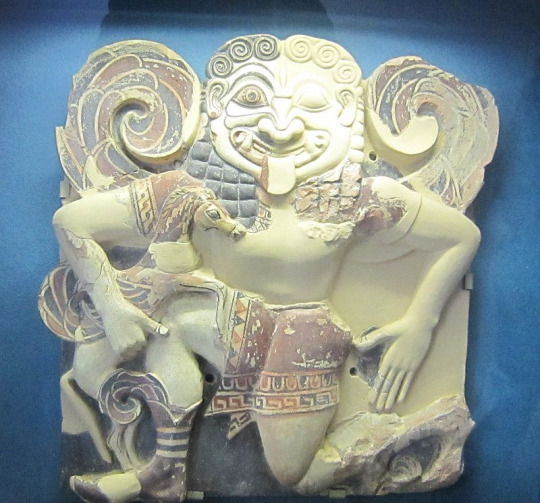

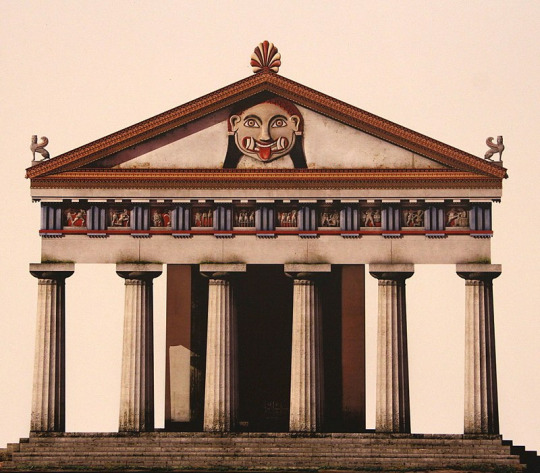
From the 5th century to the 2nd century BCE: A slow evolution as Medusa goes from a full-on monster to a human turned into a monster. As a result the two depictions of the grotesque and beautiful gorgoneion coexist.
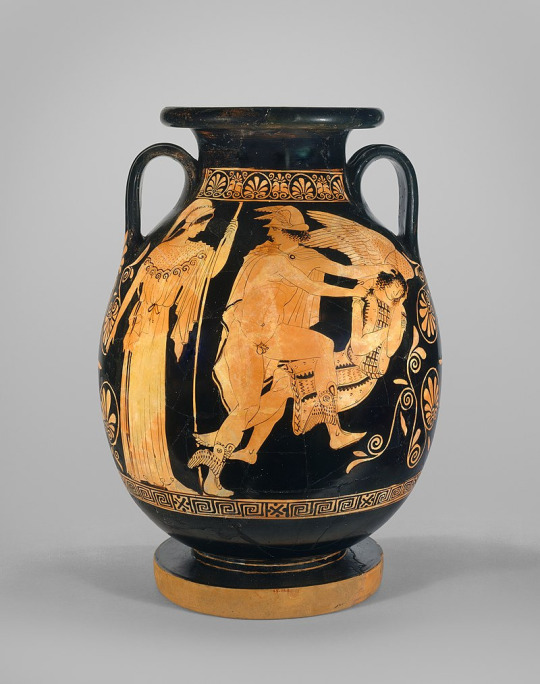


Post 2nd century BCE: Medusa is now a human with snake hair, and just that


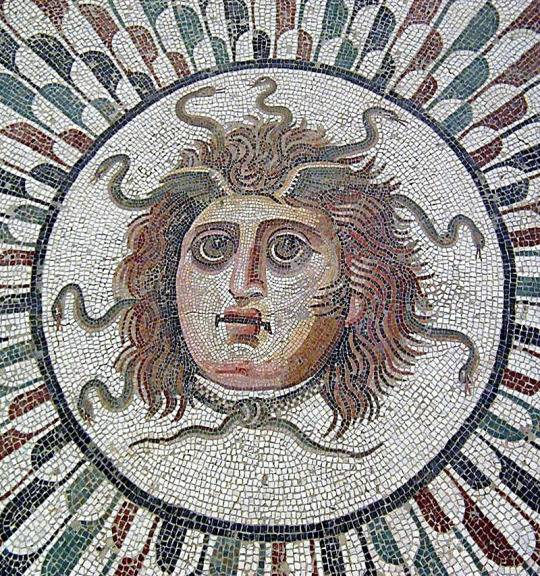
#greek mythology#medusa#gorgon#athena#gorgons#poseidon#neptune#minerva#ovid#rape in mythology#greek monsters#roman mythology
4K notes
·
View notes
Photo

Oh, for this immersion in your words...
#writing#quote#poetry#love#art#beauty#meaning#all eternal things#love in a time of...#somewhere warm#in bloom#feel you on the inside#literary sensibilities#depth perception#beauty's where you find it#for posterity#perfect now#you know who you are#elisa english#elisaenglish
0 notes
Text
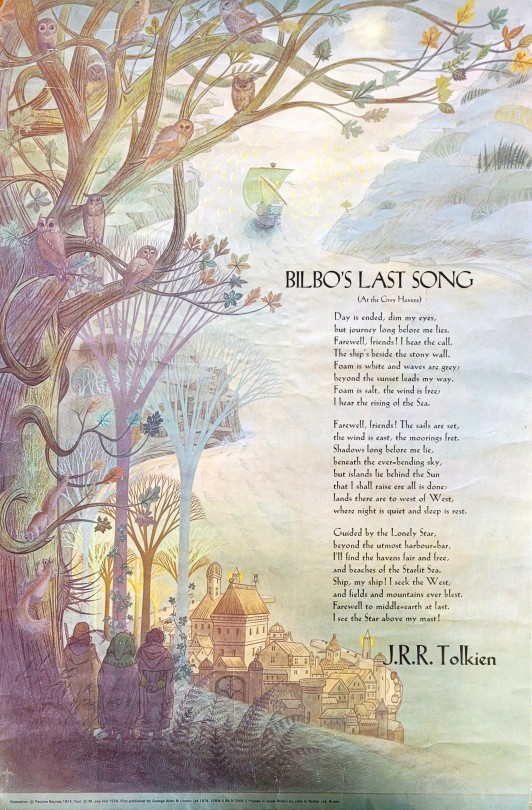
Milestone Monday
March 25th is Tolkien Reading Day, a day to honor the literary prowess of J.R.R. Tolkien (1892-1973) author of acclaimed high fantasy novels The Hobbit and The Lord of the Rings. Tolkien has shared that the seeds of inspiration for his novels came from his childhood fascination and experimentation with constructed language and a 1911 Summer holiday hiking through Switzerland. Roughly fourteen years after his Swiss adventure, Tolkien would write The Hobbit and the first two volumes of Lord of the Rings while teaching in Oxford.
Stepping slightly away from Tolkien’s novels, today we’re digging into our broadside collection and sharing Bilbo’s Last Song (At Grey Havens), a poem about leaving Middle-Earth. It first appeared, as seen here, as a poster published in 1974 by George Allen & Unwin Ltd., the original English publisher of his famous novels, with illustrations by Pauline Baynes (1922-2008), who illustrated many of Tolkien's publications. Chronologically, the poem takes place at the end of the last volume of Lord of the Rings, however it was never included in the series.
Read other Milestone Monday posts here!
– Jenna, Special Collections Graduate Intern
#milestone monday#j.r.r. tolkien#tolkien reading day#the hobbit#lord of the rings#bilbo's last song (at grey havens)#pauline baynes#broadsides#George Allen & Unwin
155 notes
·
View notes
Text

Gonna post TWO hoboxus today because I CAN!
(still desperately trying to catch up with my twitter posts LOL help I'm terrible at this)
From a meme based on art by KOTTERI, the author of Veil (among amazing other things). Find them on twitter @_K0TTERl_!
More musing below, as per usual! (Be ready it's a LONG one again)
I really hesitated with how I wanted to do this. The original had this gorgeous red poster that seemed like a perfect fit for WKX:
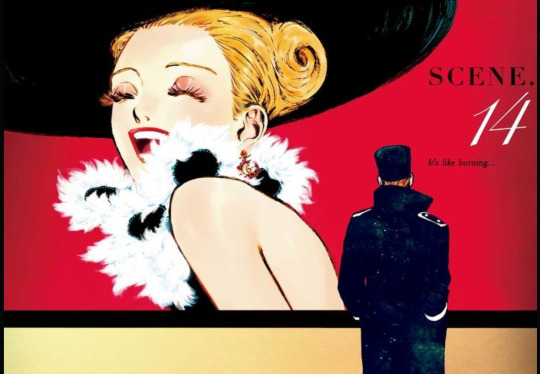
(@_K0TTERl_)
Either I went for the imagery of ZZS wistfully gazing upon the mysterious and eccentric WKX, which would definitely have been more aesthetic and undeniably fitting, or I went the semi-humorous route of channelling the "WKX fell for that ugly hobo and his gorgeous shoulder blades" meme-ified side of their dynamic.
Well, clearly that's where I ended up going, but I feel like explaining a bit.
For me, this picture was three-folds:
First part is the meme; it's kind of funny, kind of ridiculous, and sets the tone of what TYK starts off as; rather absurd, with its reasonable dose of dark humor, and the (at first seemingly improbable) meeting and love story between a silly dying hobo and a strange, suspicious, hedonistic gentleman. It felt thematically appropriate for TYK to twist the original image and put the obviously uglier one on the poster since TYK relies heavily on genre subversion to begin with.
Secondly, there is WKX. So, controversial opinion (/jk) but I don't think WKX was necessarily convinced or even really thought that ZZS was "a beauty" underneath his alleged mask. It was probably a mix of various feelings and teasing/provoking which lead to this joke. First, everything he expresses throughout the book and in extra 4; the fascination for this man who seemed too hide great strength and was of no known identity--who was probably more than what he seemed.
(I'm gonna push it just a little bit ((but isn't that the fun of literary interpretation)), but the "beauty under the mask" is not only physical. It could be a way to say, I think that beneath your raunchy, ridiculous attitude, beneath your gross appearance, beneath the pretense that you're a nobody, that you're a peasant, you're probably someone of great importance and great accomplishments, someone much stronger than you pretend to be--someone like me, perhaps, even. The shoulder blades references are, besides of course WKX *actually* noticing them, the observation of how ZZS moves, of how agile his body is, etc...)
Anyway-- the entire point of this intro is to say that to me, this isn't actually referring to that whole side of their dynamic (or not entirely), but rather to that passage that I am STILL OBSESSED WITH where Wen Kexing recognizes ZZS just from the way he's sitting in a restaurant, and that makes him feel things not entirely positive:
Zhou Zishu stepped into an inn alone. He chose a seat by a window, ordered a few side dishes and a jug of mulled rice wine, and drank it slowly while soaking in the sunshine. As soon as Wen Kexing walked in, he saw Zhou Zishu from behind. He didn’t know why, but he thought that this view was quite special—he could always pick it out of a crowd.
Zhou Zishu did not sit with his back straight. Most of the time, he lounged indolently at an angle that looked exceptionally comfortable. Wen Kexing thought that it seemed as though nothing weighed on him; seeing him was enough to ease the heart.
Wen Kexing unconsciously halted his steps. He stared at Zhou Zishu’s relaxed silhouette for a while, with no trace of an expression in his face or eyes. His heart swelled with some strange feeling—strange, in that it was no feeling at all.
He felt as though this man was mocking him with this wordless posture; he who rushed around for one thing or another, who was burdened with so many cares, yet obstinately put on a devil-may-care persona.
Zhou Xu—as carefree as duckweed, he thought, with a body like willow catkins.
In all the world, with its boundless perspectives, where could you find someone who walked their path alone and never allowed anything to trouble them?
Yet he was not apathetic—he had his joy, his anger, his sorrow—and they came in a flash as quickly as they went. Within the blink of an eye, he had forgotten it already.
(Tian Ya Ke, chapter 18, TL by Lianzi)
(have I quoted this already??? If not I should have I love this passage so much)
AND THEN QUOTING ANOTHER PASSAGE (LOL), TL by me this time:
From the moment he'd noticed his shoulderblades, felt this rush of excitement, to when he'd started liking who Zhou Zishu was, when he'd thought——so this is the Commander of Tian Chuang. Suddenly, he'd felt as if he'd met his other self. Both of them, lone wolves caught in a hunter's trap, struggling for freedom to no avail, until they had resolved to coldly gnawing off their own legs in the end.
He'd felt compelled to follow him around, watched him, until he suddenly realised—if Zhou Zishu could live like this, then surely, so could he?
(Full passage in this other post LOL)
So yes, THIS. Those two things. That's it. Need I say more? HAH OF COURSE I DO I ALWAYS HAVE TO (help)
More seriously--the way WKX is captivated by ZZS' apparent carefreeness and freedom, all the different feelings (or absence thereof, as he puts it, which I interpret as so distant from what he's used to feel that it almost feels like nothing at all) is what I was going for here.... By not showing his face at all LMAO
The envy, the frustration--the impression of being mocked, but also the longing, how it inspired him to follow along and try to be free like he was.
-cough- yes, so that was point 2 out of 3.
Now lastly, about ZZS himself and my representation of him as hoboxu. I think (?) I've written enough about him that I think I can keep this succint. I love how priest often makes a point of expliciting, in the book, how he's so often smiling, and how he's always incredibly energetic in the morning, as if the night of pain had never happened. I like to think that hoboxu is both a carricature of a ridiculous character that ZZS has fun embodying---but also a liberated expression of his deeper self.
WKX feels like he's mocking him, but ZZS is also mocking himself relentlessly, when he feels like the outside resembles the inside finally, when he feels ridiculous in these new robes, when he allows himself the most outrageous behavior---and then there's mocking life itself, mocking jianghu, mocking everything that he nonetheless deeply cherishes. It's almost... gently mocking, affectionate mocking of everything because his own life has become a joke yet he's still going to enjoy it to the fullest--drinking to his heart's content, rolling in the mud and visiting touristy sites (or so he intended).
In the end... the world is still in his own hands. He chose everything, chose the way he lived, the way he (would have) died and still has the power to dissappear at will--but he stays. Stays and endures what he pretends annoys him, because he can't help himself, because he's ridiculous and is aware of it and may as well have some fun while being so.
I can't seem to ever have enough of this, of this vibe. I wanted to have him laugh at and with WKX, at and with the people seeing him, at and with himself, at and with the narrative.
SO YEAH HAH THATS HUM THAT'S IT.
You know what they say, it's only a fun meme if there's an essay behind it (noone says that help 😭😭😭😭)
I hope you had fun reading it and have a nice weeked 🤪
169 notes
·
View notes